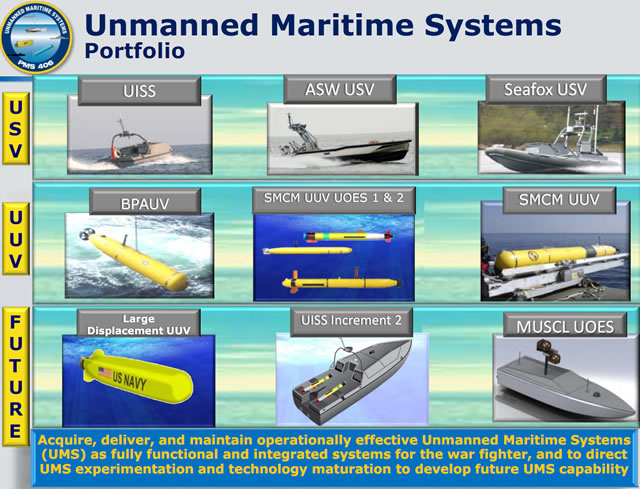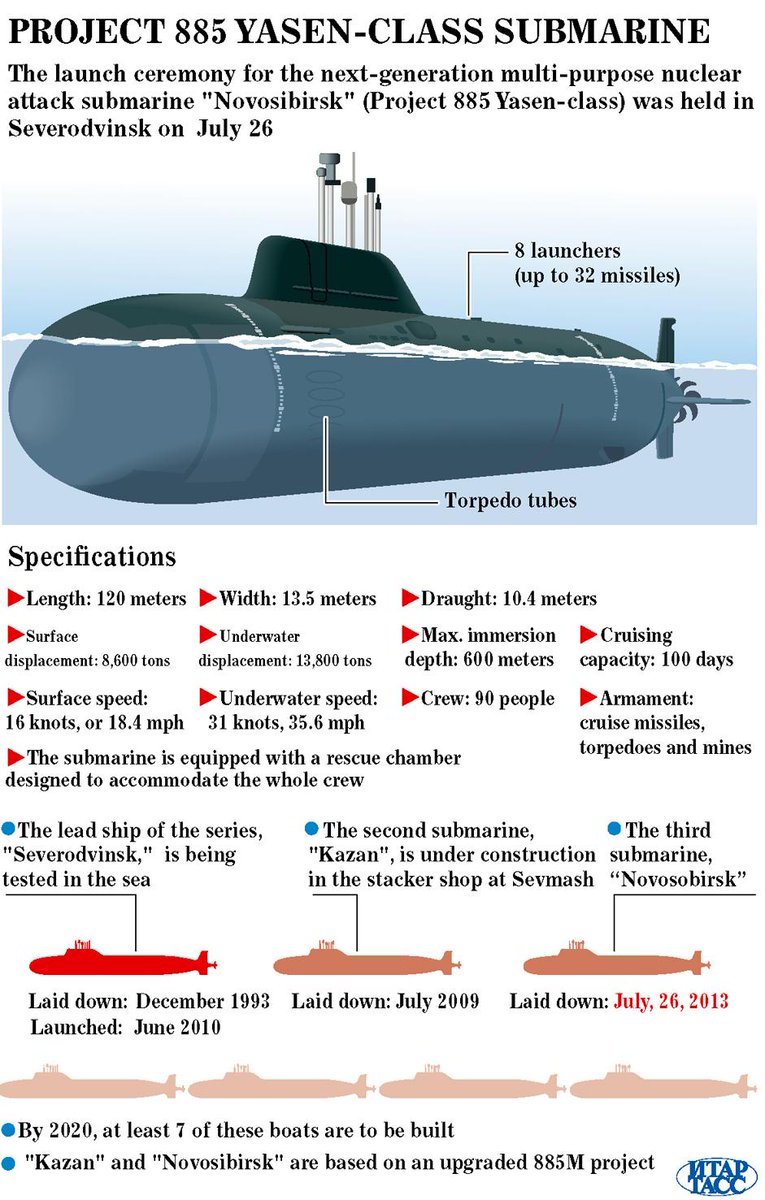Next Gen US Submarine (SSN 774 Virginia)
The US Navy -- Fact File: Attack Submarines - SSNThe Navy is now building the next-generation attack submarine, the Virginia (SSN 774) class. The Virginia class has several innovations that significantly enhance its warfighting capabilities with an emphasis on littoral operations. Virginia class SSNs have a fly-by-wire ship control system that provides improved shallow-water ship handling. The class has special features to support SOF, including a reconfigurable torpedo room which can accommodate a large number of SOF and all their equipment for prolonged deployments and future off-board payloads. The class also has a large lock-in/lock-out chamber for divers. In Virginia-class SSNs, traditional periscopes have been supplanted by two photonics masts that host visible and infrared digital cameras atop telescoping arms. With the removal of the barrel periscopes, the ship's control room has been moved down one deck and away from the hull's curvature, affording it more room and an improved layout that provides the commanding officer with enhanced situational awareness. Additionally, through the extensive use of modular construction, open architecture, and commercial off-the-shelf components, the Virginia class is designed to remain state-of-the-practice for its entire operational life through the rapid introduction of new systems and payloads.
As part of the Virginia-class' third, or Block III, contract, the Navy redesigned approximately 20 percent of the ship to reduce their acquisition costs. Most of the changes are found in the bow where the traditional, air-backed sonar sphere has been replaced with a water-backed Large Aperture Bow (LAB) array which reduces acquisition and life-cycle costs while providing enhanced passive detection capabilities. The new bow also replaces the 12 individual Vertical Launch System (VLS) tubes with two 87-inch Virginia Payload Tubes (VPTs), each capable of launching six Tomahawk cruise missiles. The VPTs simplify construction, reduce acquisition costs, and provide for more payload flexibility than the
Navy Considers Future After Virginia-Class Subs | Defense Tech
Run Silent, Go Deep: Drone-Launching Subs To Be Navy’s ‘Wide Receivers’ « Breaking Defense - Defense industry news, analysis and commentary
In Navy tests of a mini-UAV called Switchblade, “you can launch it, you can control it, you can get video feed back to the submarine,” said Rear Adm. Barry Bruner, chief of the undersea warfare section (N97) on the Navy staff, at the recent Naval Submarine League symposium in suburban Washington. Future subs could also launch unmanned underwater vehicles (UUVs) to scout ahead stealthily beneath the surface. “It sure beats the heck out of looking out of a periscope at a range of maybe 10,000 to 15,000 yards on a good day,” Bruner said. “Now you’re talking 20 to 40 miles.”
Pair that sensor range with new long-range torpedoes — yet to be developed — or submarine-launched missiles, and you dramatically increase the kill range of the current submarine fleet, Bruner enthused. “It’s phenomenal, it’s asymmetric, and it’s cheap, [and] we’re not that far away.”
Some informed observers are more skeptical. The sub-launched UAVs and UUVs are still experimental. A “universal launch and recovery system” to get the small robots off the sub and then, critically, back on again is still in development — and current attack submarines like the Minnesota lack the large-diameter launch tubes to accommodate the system anyway, although the next-generation “Block III” Virginia-class subs entering service in 2014 will be able to. The Navy is also designing a “Virginia Payload Module” that would increase future submarines’ launch capacity, but it’s uncertain whether actual development will get funded.
 |
| U.S Navy Looks to Develop Robotic Submarine Drones |
The new generation submarines of the U.S. Navy will have sophisticated technological features such as advanced, long duration autonomous underwater and surface drones and robots. They are being built under the programme "Large Displacement Unmanned Underwater Vehicle" with the prototype machines boasting critical technologies to enable UUVs to operate and survive in the littorals for more than 70 days.
Umanned Maritime Systems.pdf
Russian Graney Class - Project 885 Yasen Class Submarine
Russia's latest Project 885M Yasen-class attack submarine will have an advanced sonar system allowing it to detect enemy ships at an early stage, the submarine's engineering bureau said on 26 July 2013. The Novosibirsk, the third of eight Yasen-class boats (designated Graney-class by NATO), is to be laid down at the Sevmash shipyard near the White Sea on Friday. The boat's designer, the Malakhit Marine Engineering Bureau company said ahead of the ceremony that the new Yasen-M will be have an advanced design that would significantly increase its ability to detect enemy vessels at speeds far higher speed that those of its predecessors.
Its bow section will be "acoustically clean" and will be entirely dedicated to housing sonar systems, with the torpedo systems relocated to another part of the boat, according to the company. In order to reduce noise and increase its stealth capability, new power supply and acoustic defense systems have been developed for the boat, Malakhit said. In addition to the torpedo tubes, the Yasen class will be armed with a multirole missile system including a vertical-launcher for cruise missiles. Both the torpedo and missile tubes could be used "for a variety of weapons without being specially re-equipped," the company said.
Sevmash plans to deliver the Severodvinsk, the first Yasen-class nuclear attack boat, by the end of 2013. The submarine's armament will include 3M55 Oniks (SS-N-26) and 3M54 (SS-N-27) Kalibr cruise missiles and conventional torpedoes, rocket-torpedoes and mines, according to Malakhit. The second Project 885M vessel, the Kazan, was laid down in 2009.
Russia is also working hard on its fifth generation nuclear submarines, which will be armed with robots and underwater drones besides conventional weaponry. "The fifth generation submarines will be equipped with both contemporary weapons and new weapons," explained Nikolay Novoselov, deputy CEO of the Malakhit design engineering bureau. The RIA-Novosti quoted Novoselov saying that battle robots will be released by the submarine alongside underwater drones, reported Next Big Future news. At present, Russia is building Fourth generation Yasen-class submarines. Within it, Severodvinsk is the flagship of the Yasen-class submarines and is being reckoned as the backbone of the Russian Navy's conventional submarine force. Besides 533mm torpedoes, Yasen-class submarines will carry the capability to fire cruise missiles from eight of its vertical launching systems. Supersonic anti-ship missiles such as Onyx and Kalibr will also be enabled.


1 comment:
Will the UUV and USV operators be called pilots or captains?
Post a Comment